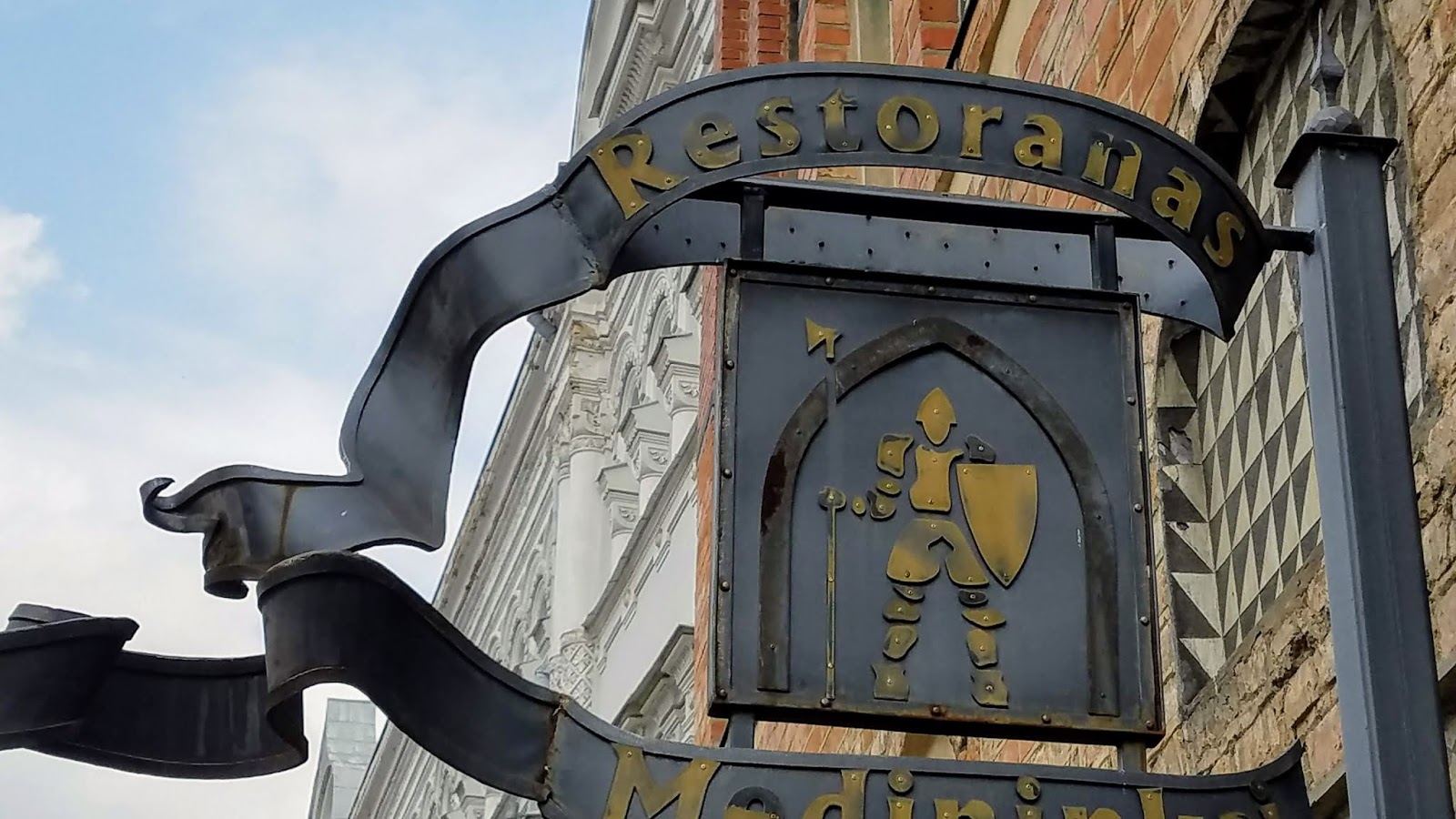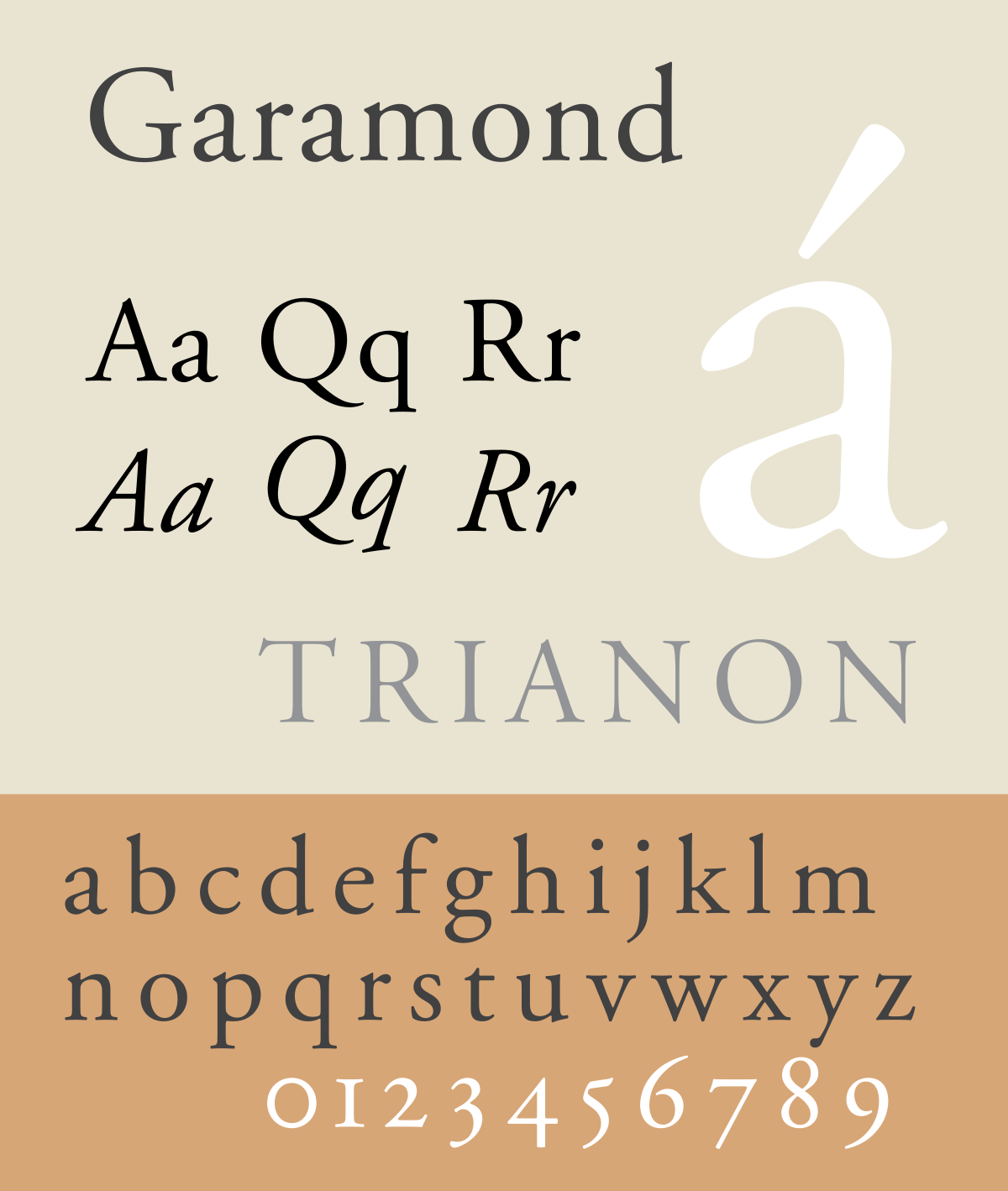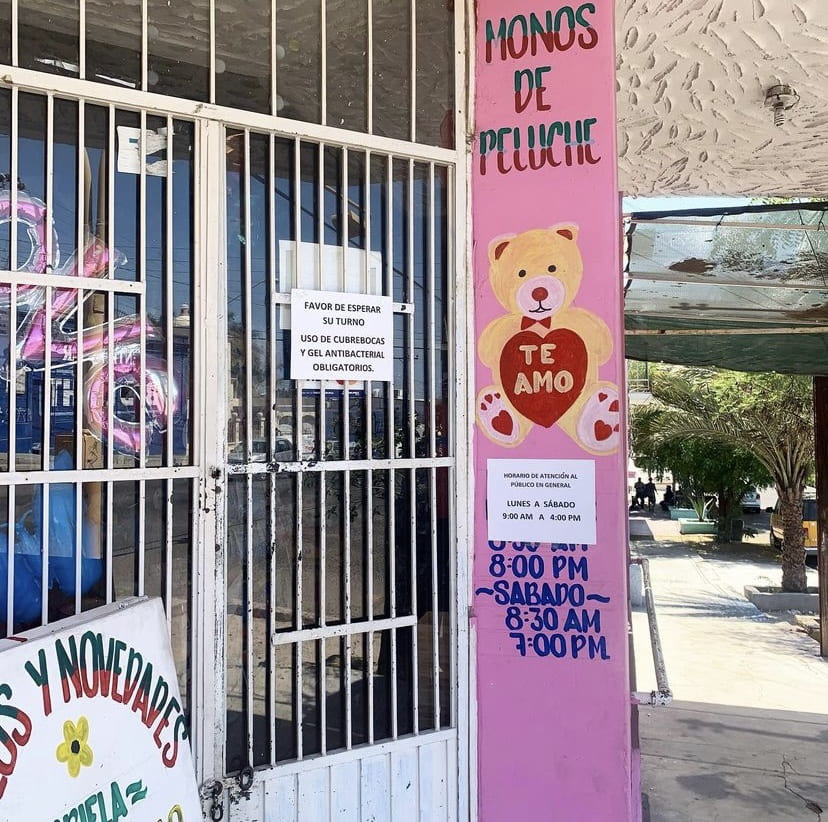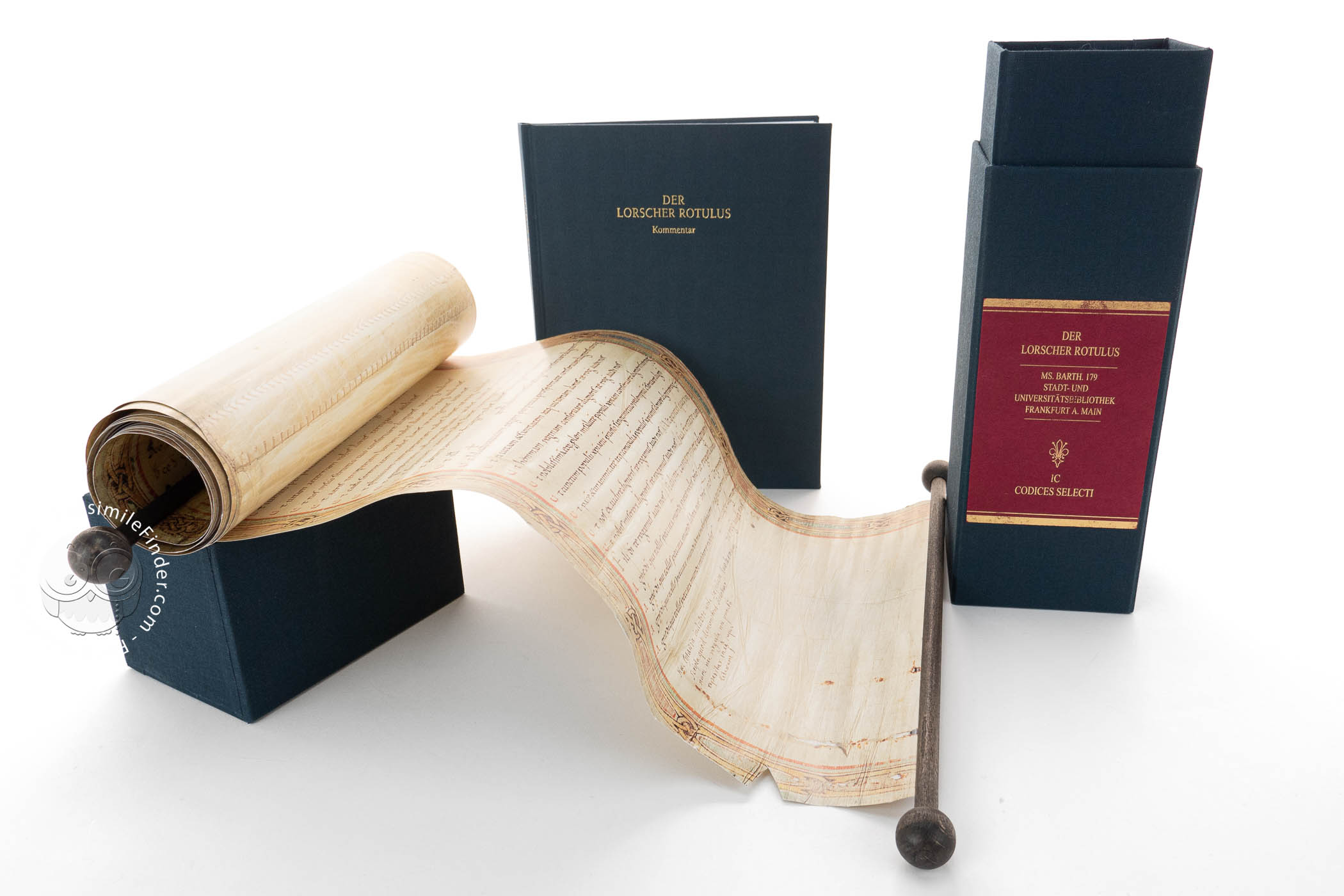Mexican Rótulos
Most of the local businesses in Mexico City don’t pay for a logo or a fancy brand identity, or at least they didn’t use to. Anywhere you look around in this city, you’ll see colorful handwritten words that announce something. It could be food, a cybercafe, an auto repair workshop, a dentist’s office, and any business you could have in mind. These handwritten signs are called rótulos.
I wasn’t precisely a big fan of the rótulos, especially because when these words are painted on walls don’t receive the right maintenance, they start looking dirty and abandoned. However, one day I bumped into this post from a vintage clothes shop I follow:

This rótulo reads “Love yourself today. It is for free.” /IG: @lupebaezvintage. The creator of this rótulo is the sir sitting in the picture. The suitcase with words written on is where he carries all of his materials.
Probably it was the contrast between this trendy store owned by millennials who decided to give it a try to this old technique, and seeing the process behind these signs (the shop was posting the process on their Instagram stories) that made me value these works and think to myself “Hey, they are actually so cute!”.
Learning More About the Term
First of all, to write this entry I tried to find an appropriate translation for the term “rótulo”. These were: “signage” and “sign”. The word comes from the Latin rotulus which refers to a roll of parchment or papyrus on which something was written to have a permanent record, and it can also mean “sign’ or “label”.
A rotulus
The words “sign” and “label” contain the essence of what a rótulo was for me in my mind before looking it up, but still, it didn’t convince me completely. I ended up finding out that a rótulo is simply something drawn on a surface that indicates something and if you google the word you can come up with things like this among the first results:

Sign by “Mateo Rótulos” announced on their website as the oldest signage makers in Biscay
Today I learned that a rótulo is a word in Spanish that simply indicates any kind of sign or signage. Why didn’t I know this before? Because for me rótulos were specifically these hand-drawn colorful words accompanied by some cheerful and sometimes funny illustrations that a lot of businesses in Mexico use to indicate what they sell.

Street Food Stand in Mexico City; It reads “The Torta’s (Sandwich) Madness” announcing the name of the place.
As we can appreciate, there is a huge artistic and stylistic gap between the Coca-Cola Sign and this lovely sandwich business. This is why I decided to use this entry to learn more about them and to share with you the history of this colorful art called Rotulación that decorates my city.
Its History and Its Beginnings in Mexico
Rotulismo is the art of writing letters and numbers in a standard way or form. This art has as the main goal to get people’s attention and transmit a message. It started in the Middle Ages when the most used surfaces to make this kind of work were wood and metal.

Example of a Medieval Sign
The rotulismo tradition arrived in Mexico at the beginning of the 20th-Century, around the end of the Mexican Revolution (1917). Commerce started emerging after the war, and business owners wanted to boost their businesses’ visibility. Seeing this demand, a lot of people without truly artistic preparation, started dedicating their lives to makerótulos. They had more technical than artistic knowledge, and they developed a product that was simple and functional, but also attractive.
@marfilu on Twitter. A milkshake street stand in Mexico City.
The rótulo makers started using typography, style, and type of stroke that was inherited from their families. They were mostly self-taught. Nonetheless, in some cases, their knowledge was improved by acquiring technical drawing and advertising design knowledge from whichever source they could. One of these resources was the Speedball Manual which is a lettering guide, published by a US manufacturing company of stationery and art products. You can check out a pdf of an old Speedball Manual here.
Cover Page of the Speedball Manual

Page from the Speedball Manual
The most common typographies used for rótulos are Futura, Open Sans, Helvetica, Fonseca, Garamond and Gothic.






Most Used Fonts
A Disappearing Art
The colors, typography, and everything that makes part of this iconic art has been part of the essence of Mexico City for the past century. Nevertheless, since they started as a fast solution for an increasing demand a hundred years ago, now the rótulos are slowly being replaced by more modern and refined options. The first graphic design school in Mexico opened in 1968, so the birth of graphic designers and the arrival of the digital impression, marked the beginning of the end. The rótulos business started declining and the people dedicated to this got adapted to these new changes or disappeared. This process of adaptation implied the end of the rotulismo art and its techniques.

A rótulo with Woody Woodpecker that reads “fresh chicken” for a poultry shop
The Drawings
Inspired by the Woody Woodpecker above, I want to share more of the drawings that sometimes make part of the rótulos. To me, they are hilarious if I think about how ironic they are, but I have also come to normalize them for how common they have been in my life. Is not only that sometimes they contain an animal killing another animal from the same species (as in the previous example), it is also the fact that these drawings are a lot of times bad copies of already existing cartoons.

Rótulo for a establishment that sells a pork-meat based dish called “carnitas”
The example above is a low-key creepy drawing where three pigs are cooking the carnitas maker. The shades used here make the pigs look as if the only light they are receiving was coming from the fire, making them resemble evil witches with a cauldron. And yes, this is something that you could normally see painted on the wall of your favorite restaurant.


Rótulos inspired by Porky from the Looney Tunes
These rótulos above with a smiley pig, are one of the most common within the carnitas industry. This smiley pig is a copy of Porky from the Looney-Tunes, and the most common version of this drawing is Porky smiling inside the saucepan where he is being cooked. Ironic and cruel.
The Last Rótulo Maker

Martín Hernández, known as “the last rótulo maker”
In a small shop in Mexico City’s downtown, specifically the number 58 on Perú Street, you can find Mr. Martín Hernández. This street was known for grouping a lot of rótulo makers. Today, Mr. Hernandez’s workshop is one of the few that are still working.

“Tacos and Juices ‘Upside Down'”
He explained in an interview that there’s some psychology behind the rotulismo process. For example, specific colors would be used for the type of business they were doing it for. For a hair salon, they would use blue and red letters. For butcheries, they would use white walls and red letters because this color was associated with blood. He says that it is necessary to have a good sense of humor and that for some poultry shops he would draw some chickens riding a Ferris wheel.

“Super Healing Juices”
Mr. Hernández also explains that before, the rótulos served for a bigger purpose since a big part of the population was illiterate and the drawings helped to interpret the message.
Efforts to Preserve It
Rótulos make part of Mexico City’s identity and recent history. They involve a style, a kind of psychology of color, a specific sense of humor, and techniques that haven’t been registered in any kind of manual. All of this was transmitted from grandparents to their grandchildren and has evolved throughout time and it’s truly a shame that all these elements are getting lost with the decreasing use of this art.

Mexicana de Rotulación’s Facebook Profile Picture
In more recent years, groups like Mexicana de Rotulación have been trying to make an online archive for this art. They have created a series of videos where they interview rótulo makers who explain their techniques and an Instagram account where they immortalize rótulos that exist around the city. Museums and street art festivals are also trying to keep rótulos alive by dedicating exhibitions to them and giving spaces to rótulo makers.

Exhibition at the MUCA (University’s Museum of Arts and Sciences) dedicated to rotulismo
It’s now up to us, millennials and gen-z’s to keep this art alive. To appreciate its value, beauty, and historical importance and keep doing efforts to use it, to continue giving it spaces, and make a register so it doesn’t die in nothingness.

IG: @cafeinadulce
It made me smile opening my Instagram five minutes ago and seeing that an influencer that I follow posted the exterior of a stationery shop (here above) with some rotulismo work. The teddy bear reads: “I love you”.
By the way, local stationary shops in Mexico sell stuffed animals.
References
Acuña, Carlos. “El último rotulista de la CDMX”. Más Por Más. 19 July 2018. https://www.maspormas.com/especiales/el-ultimo-rotulista-de-la-cdmx/
Cera, Diego.”Mexicana de Rotulación: el proyecto que rescata y registra la tradición del rótulo en la ciudad”. Local. 27 May 2019. https://local.mx/cultura/diseno/mexicana-de-rotulacion/
De Sal, Salomé.”La Gráfica Popular Mexicana: El Rótulo.” Tercera Vía. 16 April 2020. https://guanajuato.terceravia.mx/2020/04/la-grafica-popular-mexicana-el-rotulo/
MXCity.”La Fabulosa Historia De La Gráfica Popular Mexicana”. MXCity. https://mxcity.mx/2016/11/la-fabulosa-historia-la-grafica-popular-mexicana/
Vazquez, Martin Julio.”El rotulismo en México: tradición e identidad”. Domestic. 14 May 2019. https://www.domestika.org/es/blog/1975-el-rotulismo-en-mexico-tradicion-e-identidad



Miriam, this is the coolest topic to choose! I am such a big fan of these sorts of hand-drawn signs and advertisements (which I now know are called rotulismos). Like you mention it’s not just about having a sign, but in the performance of making the sign. When there were a bunch of people making signage by had you could find all sorts of variations in type and composition while also using things like colors to indicate the type of business.
I know that when these signs fade or fall into disrepair they become something known as “ghost signs.” Ghost signs are simply the old and faded versions of these signs, usually from a several decades past. Areas like Cooney Island in NYC, who built their unique charm through signs like this, are facing similar sorts of problems because this art for is not sustainable.
Just wanted to say that this is such an interesting blog post. Thank you for writing it and choosing this topic.
I have been just thinking about personal connections in branding so it is really interesting that you thought “oh these are actually kind of cute” when you saw the picture of the artist in front of his rótulo. Knowing about the process, and especially knowing about the maker makes you feel more connected to the work and even made me feel more connected to it as I was reading your post in a way that I cannot quite explain. I also felt a personal connection when you wrote about the last rótulo maker and found myself very emotionally invested in their preservation.
It is sad to see the decline in the use of rótulos in favour of more modern signage, but I think that they are a really cool art form and I hope that they could be preserved and stick around. It’ll be a huge shame if we lose something like that.
This is an amazing post Miriam! I never knew about Rótulos and it’s incredible how through these blog posts we’re able to learn about new design techniques/styles that can influence our own work in many ways. It’s nice how an art style like Rótulos is not only a design technique, but it’s a part of the culture in Mexico. Logos and illustrations do so much more than just give information or identify a company, and thank you for highlighting that through this blog post!
Wow, so cool! While you mentioned that online platforms are doing their best to honor and preserve the work and the stories of the hand-drawn works of the past, do you think there is a space for the practice to be re-born online? Instead of painted works, could the artists shift to e-drawings for a company’s website?
I do think it is possible to rescue this art through digital mediums, and not only to preserve it, but also renew/ re-invent it. There are currently some artists that are re-adopting this style to share social and political messages like Rótulos Mtz Pelo.